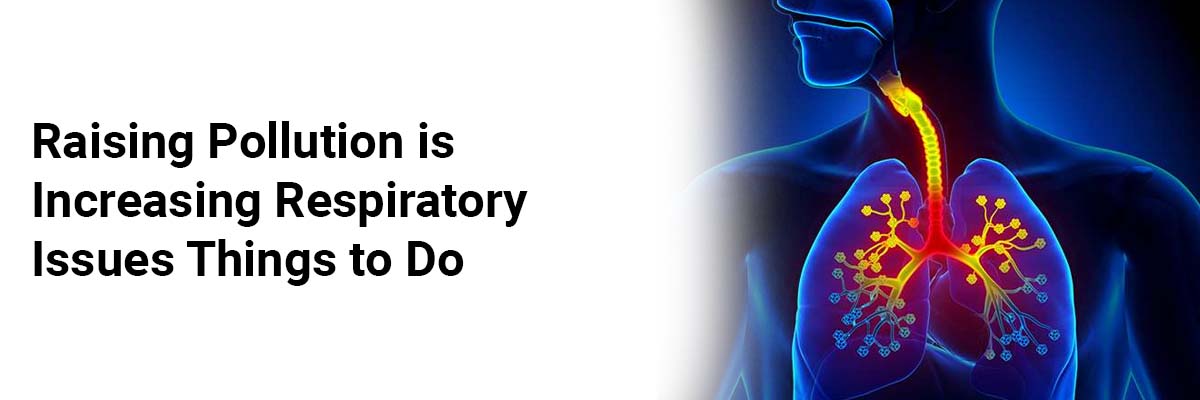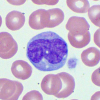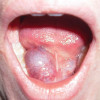
 IJCP Editorial Team
IJCP Editorial Team
Raising Pollution is Increasing Respiratory Issues: Things to Do
In our rapidly industrializing world, the alarming surge in pollution levels has become a pervasive concern, directly impacting public health. Air pollution poses detrimental effects on various physiological systems, exacerbating pre-existing medical conditions.
Air pollution is the presence of one or more toxic substances in the air, such as dust, fumes, gas, mist, smoke, or vapor, in harmful concentrations and prolonged durations that have the potential to harm human health. The primary route of exposure to air pollution is through the respiratory system, leading to oxidative stress, immunosuppression, and cell mutagenicity throughout the body and affecting various organs such as the lungs, heart, and brain. Due to their minute size, certain air pollutants can infiltrate the bloodstream through the lungs, circulating throughout the body and causing systemic inflammation and carcinogenic effects.
Air pollution poses a risk for both overall mortality and the development of specific diseases. Notably, exposure to air pollution is most strongly associated with outcomes such as stroke, ischaemic heart disease, chronic obstructive pulmonary disease, lung cancer, pneumonia, and, exclusively in the case of household air pollution, cataracts. Furthermore, air pollution is also a major contributory factor for cardiovascular disorders, neurological disorders, and adverse pregnancy outcomes. Vulnerable populations, including children, the elderly, and individuals with pre-existing health conditions, are particularly at risk of clinical adversities associated with air pollution.
Effects of Pollution on Respiratory System
One of the most significant health concerns associated with environmental pollution is the escalation of respiratory issues. The inhalation of polluted air introduces harmful pollutants, such as particulate matter, nitrogen dioxide, sulfur dioxide, ozone, and carbon monoxide, into the respiratory system, leading to inflammation of the airways, compromised lung function, and increased susceptibility to respiratory infections. Long-term exposure to air pollution has been linked to the development and worsening of respiratory diseases such as asthma, chronic obstructive pulmonary disease (COPD), and bronchitis.
Respiratory Disorders Caused by Air Pollution
Chronic Obstructive Pulmonary Disease (COPD): COPD is a chronic inflammatory lung disease that causes obstructed airflow from the lungs. Inhaling pollutants like fine particulate matter and nitrogen dioxide can lead to chronic inflammation, oxidative stress, and structural alterations within the respiratory system, contributing to the development and exacerbation of COPD.
Asthma: Air pollution has been identified as a significant trigger for asthma exacerbation. Individuals with asthma, particularly children and the elderly, are more vulnerable to the adverse effects of ozone and particulate matter. Exposure to these airborne irritants can provoke airway inflammation and bronchoconstriction, worsening asthma symptoms and necessitating increased medication use.
Respiratory Infections: Air pollution may lead to respiratory infections, as prolonged exposure to pollutants can compromise the respiratory defense mechanisms, making individuals more prone to infections such as pneumonia.
Bronchitis: Bronchitis occurs when the air passages leading to the lungs, namely the trachea and bronchi, become inflamed and accumulate mucus, prompting persistent cough. Exposure to irritants such as secondhand smoke, air pollution, and chemical fumes or dust can contribute to acute and chronic bronchitis.
Lung Cancers: Numerous clinical studies have provided strong epidemiological evidence linking various air pollutants to a higher incidence of lung cancers. Air pollution may result in DNA damage, DNA adduct formation, chromosomal aberrations, and methylation modifications, some of which are being explored as potential biomarkers for lung cancers.
Major Cause of Respiratory Disease: Particulate Matter
Particulate matter stands out as a significant causative factor in developing and exacerbating respiratory diseases. These are microscopic particles, either solid or liquid, suspended in air of varying size and composition and can infiltrate the respiratory system, reaching the deepest parts of the lungs. Particulate matter can originate from various sources, including combustion processes, industrial activities, vehicle emissions, construction activities, and natural sources such as wildfires and dust storms. Once inhaled, particulate matter can induce inflammation, oxidative stress, and cellular damage within the respiratory tissues. Fine particles, known as PM2.5, are particularly concerning as they can penetrate deep into the lungs and even enter the bloodstream, disseminating their harmful effects throughout the body.
Tips to protect your respiratory health from pollution
Stay indoors on days with high air pollution to reduce personal exposure.
Utilize air filters to clean indoor air.
Limit physical activity, especially outdoors and near pollution sources.
In specific circumstances, respirators may be effective in reducing exposure.
Stay informed about air pollution levels through public air quality alert systems.
Individuals with chronic cardiovascular or pulmonary conditions, children, and the elderly should be especially cautious.
Emphasize the primary importance of reducing emissions at the source to address air pollution challenges effectively.
Effective medical treatment and management of pre-existing conditions of asthma and COPD are essential to avert clinical adversities.
Conclusion
As the global burden of air pollution continues to rise, addressing this public health crisis requires comprehensive strategies, including reducing emissions, implementing stringent environmental regulations, and promoting sustainable practices to safeguard human health and well-being.

IJCP Editorial Team
Comprising seasoned professionals and experts from the medical field, the IJCP editorial team is dedicated to delivering timely and accurate content and thriving to provide attention-grabbing information for the readers. What sets them apart are their diverse expertise, spanning academia, research, and clinical practice, and their dedication to upholding the highest standards of quality and integrity. With a wealth of experience and a commitment to excellence, the IJCP editorial team strives to provide valuable perspectives, the latest trends, and in-depth analyses across various medical domains, all in a way that keeps you interested and engaged.









.jpg)










Please login to comment on this article